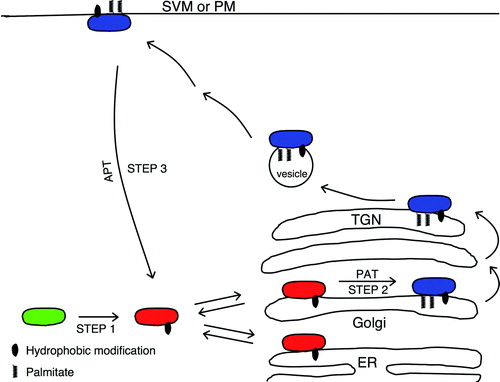Figures & data
Table I. Half-times of fluorescent protein recovery into the Golgi compartment following photobleaching.
Table II. Intracellular localization of mammalian DHHC family of palmitoyl transferases.
Table III. Mutations in DHHC proteins associated with pathology.
